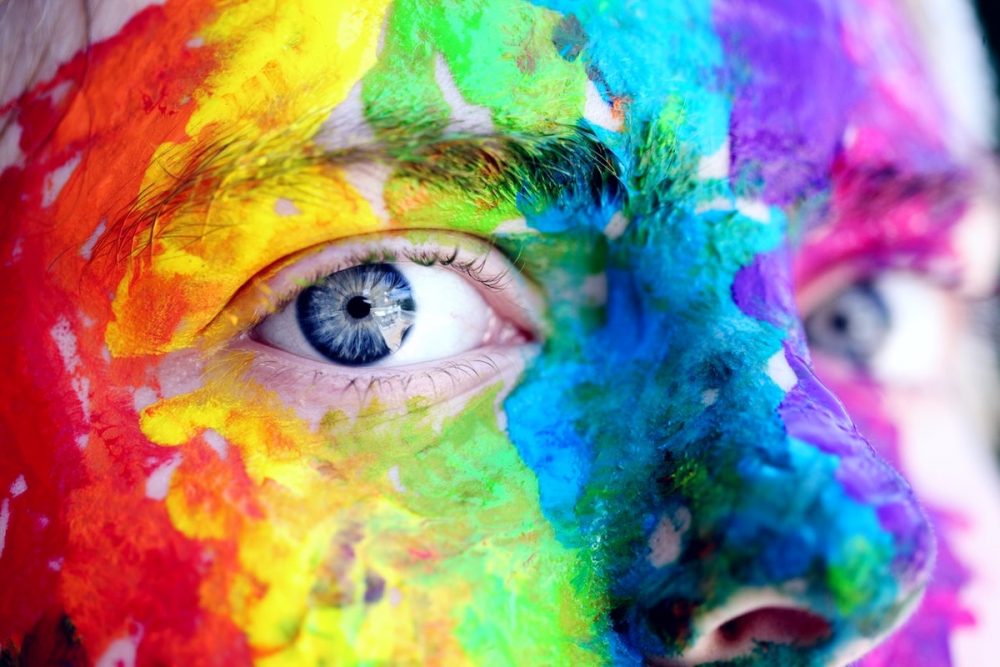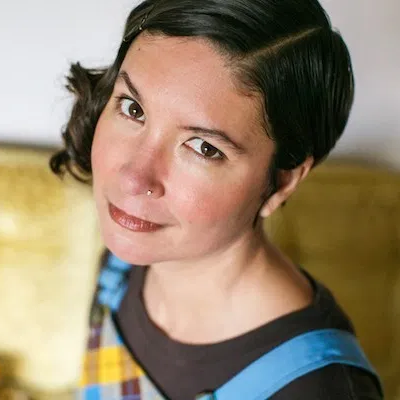
Today’s post is by regular contributor Susan DeFreitas (@manzanitafire), an award-winning author, editor, and book coach. She offers an online course, Story Medicine, designed to help writers use their power as storytellers to support a more just and verdant world.
Recently, I sat down (virtually) with my good friend and colleague Vinnie Kinsella, the editor of Fashionably Late: Gay, Bi, and Trans Men Who Came Out Later in Life, to discuss a subject of interest to any fiction writer who sees themselves as an ally to queer folks: tropes to avoid with LGBTQ+ characters.
It was a lively and far-ranging discussion. I had the honor of being one of the first colleagues Vinnie came out to (later in life, as the title of his essay collection attests), and like any good book nerd, one of the first things he did at that time was to read every book he could find that centered gay narratives.
I remember how frustrated he was at the various fictional storylines he encountered again and again—and I remember the way he found himself speculating on how incredibly unhelpful such stories must be to young queer kids, desperate to find the sort of characters they could see themselves in.
At the end of this month, our full conversation will join the archives of my online course, Story Medicine—but I wanted to make sure I shared some of the key takeaways from that conversation here, in order to make this information as widely available as possible. (Note: This post is primarily aimed at fiction writers who identify as straight.)
Part 1: Tropes to avoid with LGBTQ+ characters
1. “Bury Your Gays”
You know that racist story trope, wherein the token Black or Brown character gets killed off in the first half hour of the show? There’s a direct equivalent with queer characters, when the queer character dies early on in the story—and this too is something you want to avoid.
Often, the killing of this queer character is there to spark outrage against the bad guy doing the killing—and often, the gratuitous offing of this character is meant to show us just how deeply the (straight) protagonist cares about said queer person, thereby showing us what a good guy or gal they are. (You know, “save the cat.”)
Regardless, this is a trope you want to avoid, as it tends to send the signal that being queer means being sentenced to a short, tragic life—and, in storytelling terms, it tends to imply that such characters aren’t worth developing into fully three-dimensional, complex characters.
2. Magic Gay Bestie
Here’s another trope with queer characters that has a direct equivalent with race: the trope of the Magic Gay Bestie—which I have so christened because it’s a lot like the trope of the Magic Negro.
The Magic Gay Bestie is the queer best friend of the straight protagonist. They’re not particularly complex, and they don’t seem to have much in the way of goals or desires of their own—they’re just there to sprinkle a little rainbow fairy dust on the protagonist’s life, perhaps offering some sage advice about being yourself or chosen family (you know, Things That Gay People Know), along with a little comic relief.
This too is a trope you want to avoid, because the message this type of character sends is clear: The straight character is the one whose story actually matters.
3. Characterization Via Stereotype
Finally: There’s one approach you want to avoid with any character who hails from a historically marginalized group, and that’s to make every aspect of that person’s characterization point to their status as a member of this historically marginalized group.
For instance: A gay male character who A) is a hairdresser, B) owns a small dog, C) is effeminate, D) is flamboyant, E) speaks with a lisp, F) loves to go clubbing, and G) is a die-hard fan of The Golden Girls.
Do people exist in real life who fit this description? Almost certainly—but as Nisi Shawl and Cynthia Ward put it in Writing the Other: A Practical Approach, “When every trait you ascribe to a character points to the same group, you’re just promoting a widely held stereotype.”
Here instead are some best practices you can rely on when writing queer characters (and characters from other historically marginalized groups as well).
Part 2: Best practices for writing queer characters
1. Don’t Make Them the Sole Representative
When you only have one member of a historically marginalized group in your story, that character is essentially forced to represent that whole group—and however you characterize them, that person will appear to represent the author’s conception of that group as a whole.
The easiest way to avoid this is simply to have more than one character from that same group in your story. Because if you have a bisexual villain in your novel, it will look like you yourself consider bisexuals somewhat nefarious or threatening—unless you have bisexual “good guy” as well. Then it will just look like the world of your novel is full of people of all different types (just like the world we actually live in).
As an added bonus, avoiding the “tokenism” of a single character from this historically marginalized group can also add a note of realism often missing from fictional depictions of all those Magic Gay Besties. Because real queer people tend to, you know, actually have other queer friends.
2. Address Privilege
Remember Magic Gay Bestie? There’s a character like that in the Netflix adaptations of Jenny Han’s To All the Boys I’ve Loved Before, Lucas, one of the boys the protagonist, Lara Jean, had a crush on in junior high, turns out to be gay—and so, rather than connecting romantically in high school (the period in which the story is set), the two reconnect as friends, and Lucas offers sage advice to Lara Jean in choosing among the two suitors she winds up torn between.
To my mind, this depiction manages to avoid Magic Gay Bestie syndrome via a scene in which Lara Jean and Lucas are at a dance: Lara Jean bemoans the difficulty of choosing between these boys she likes so much, and Lucas responds by noting what a privilege it is that she actually has this choice.
In this scene, Lucas goes on to note how few boys at their school are openly gay—the fact that, for him, there really are no choices to be made. Lara Jean responds by essentially saying, “Hang in there—we won’t be stuck in high school forever, and when we get out of here, you’re going to have your pick.”
That scene, to me, is where the story does right by this gay character, by acknowledging his lack of privilege with regard to the straight protagonist. (As an added bonus, this short exchange really supercharges their graduation day, later on in the story, with deep emotion when the camera turns to Lucas.)
3. Characterize Nonstereotypically
Remember our gay male hairdresser with the small dog, who’s flamboyant and effeminate, loves to go clubbing, and adores The Golden Girls? Don’t get me wrong, I love that guy IRL, but…if this is a character in your novel, you’ll probably want to remove at least one of those stereotypically gay male traits, and focus instead on something about them that has nothing to do with the fact that they’re gay.
You might focus on this character’s close relationship with his elderly next-door neighbor, his love for classic Russian literature, his fear of heights, his obsession with near-future dystopian sci fi, whatever—as long as the trait you’re emphasizing is not one typically associated with this character’s historically marginalized group, you’ll be working against stereotype, rather than helping to perpetuate it.
And the added bonus here is this: You’ll just be making them a more interesting, complex, three-dimensional character, period.

Susan DeFreitas is the author of the novel Hot Season, which won a Gold IPPY Award, and the editor of Dispatches from Anarres: Tales in Tribute to Ursula K. Le Guin, a finalist for the Foreword INDIES. An independent editor and book coach, she specializes in helping writers from historically marginalized backgrounds, and those writing socially engaged fiction, break through into publishing.

I loved this post. It is so very true.
I do tend to prefer to read books about LGBTQ+ characters that are written by other LGBTQ+ people, but straight people can write them well, too, if they do some research first. 🙂
Love this, Susan–sharing!
Thanks for this important piece. I’ve ghostwritten two memoirs for gay men. Three of my dearest friends are gay men, and I never knew it until long after I’d met them. You are right about the tropes and the characterizations. One’s sexual orientation is rarely obvious at first, IRL. It’s often revealed only after the development of a trusted relationship or when you meet their partners. Subtlety is powerful and effective.
Great advice! Thank you for sharing. I am always on the hunt for good resources like this, as my WIP has a gay and a bi character as part of the cast.